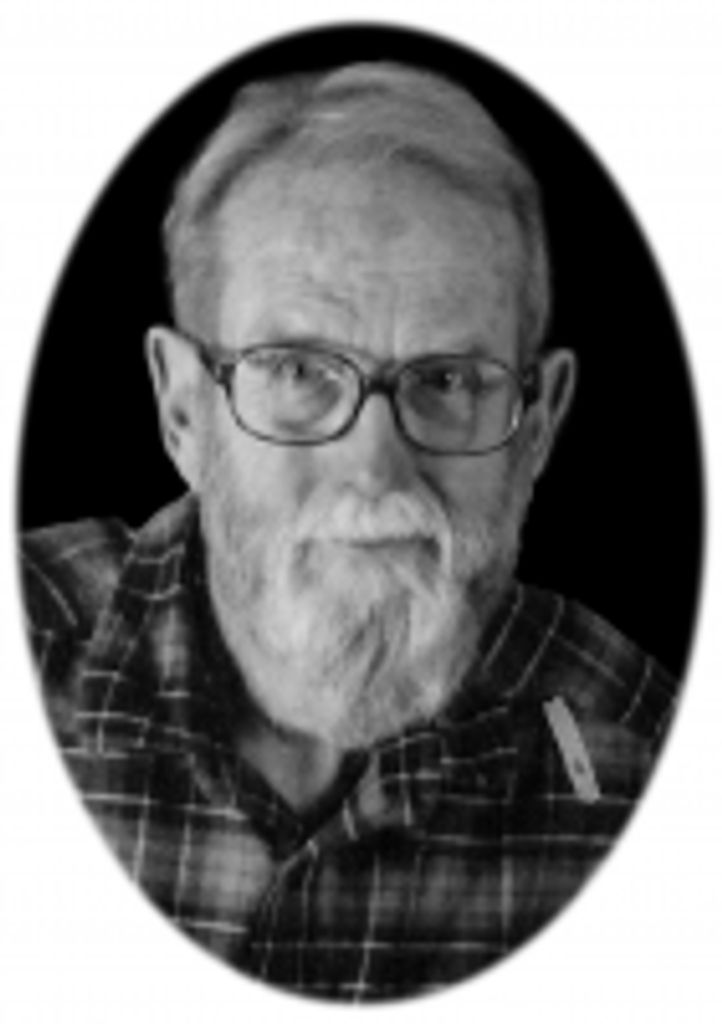09,
1926

25,
2013
HAMILTON - Winslow Caughey, biochemist, entrepreneur, professor, cattleman, honored father, and Montana resident for 18 years--passed away in Hamilton on February 25th, 2013 at the age of 86. A gregarious and deep-thinking man who loved wildlife and wide open spaces, his laugh (and sneeze) often carried outside the confines of Ravalli County. Born on November 9, 1926, in Antrim, New Hampshire, he was the youngest of Rachel Brown and George Herbert Caughey's 5 children. Known to many by his childhood nickname Skeezie, after a character in the comic strip Gasoline Alley, he had a soft spot for his sister Betty, who helped raise him. His brothers taught him to swim before he could walk by tossing him from the town dock into Gregg Lake. Much to their dismay, he came to hold the record for the biggest bass caught in the lake.
Winslow advanced rapidly through the two-room (one for storage) schoolhouse in Antrim, finishing high school at age 15 during World War II. Like his brothers, he headed to the University of New Hampshire, where his studies were interrupted, based on precocious talent for physics, by recruitment to the Navy Electronics Program, where, starting at age 17, he worked on radar at a secret facility on Chicago's Navy Pier, and became accidentally famous for spilling his lunch tray on Fleet Admiral William "Bull" Halsey. After discharge (Honorable), he completed studies at UNH and went on to earn his PhD in Chemistry at Johns Hopkins University, where he met Helen Hill, the "woman so privileged as to be my wife," while teaching an evening chemistry course. They married in 1952.
In 1956, Winslow and Helen co-founded the Monadnock Research Institute in Antrim, where he synthesized porphyrins as potential anti-cancer agents. Their young children enjoyed roaming the 500-acre campus, complete with apple orchard, cows, and frog pond. In 1960, he was lured back to Johns Hopkins as an Assistant Professor, and the family of six moved into a rambling estate in Owings Mills, Maryland, containing a barn, hay and crop fields, grape arbor, apple orchard, arboretum, daffodil and iris collections and a frog pond. In 1967, he moved to the University of South Florida as a Professor. The house was next to a lagoon of the Hillsborough River, where adventures involved water moccasins and alligators. In 1969 Winslow moved to Arizona State University and became a Visiting Staff Scientist at the Los Alamos National Laboratory. In 1973, he became Chair of the Department of Biochemistry at Colorado State University, where he taught until 1995. During those years, he received numerous awards for teaching and research, became an Honors Professor, and traveled widely. In idle moments, he "ranched" after realizing that it was easier to keep cattle than to mow prairie grass. When communing with real ranchers, he neglected to mention that his herd was only two head strong, but he did not neglect to wear a big hat. Upon retirement, Winslow and Helen moved to Hamilton, where Winslow volunteered at the NIH Rocky Mountain Laboratories and had to report to his son Byron. Over a lifetime as a "bio-inorganic chemist", he published over 200 scientific books and papers. He was passionate when discussing science, but was an omnivorous reader and never shy about holding and sharing opinions on non-scientific subjects. As he regained consciousness after heart valve surgery, his family had to explain that talking about how oxygen sticks to hemoglobin was not delirium, but just his favorite topic.
Every summer, Winslow, Helen and family returned to his hometown in New Hampshire to visit relatives and friends and to stay at the rustic camp he built with his father, brothers and friends in 1939, with no electricity, running water, or road access. Driving to and from Antrim with assorted children and animals provided its own adventures. Cousins and other friends visited too, and it was easy to have 9 children distributed among tents and bunkhouses. Epic hikes, canoe rides, swims and other explorations filled the days. His middle children conspired to hide his razor upon arrival at the camp one summer in the mid-1970's. By the time he figured out what had happened, a beard had appeared, which he was never again seen without.
Winslow was devastated when Helen died in July of 2011. However, he decided that he "still had some things to do," including ensuring that no one at the Sapphire Homes in Hamilton took life too seriously. He is survived by his children, George Caughey of Woodside, California, Joan Gorga of Antrim, New Hampshire, Byron Caughey of Hamilton, Montana, and Claire Most of Stillwater, Minnesota, and by 11 grandchildren. A memorial service is planned for the peak of black fly season in Antrim in May. Baked beans, parsnips, turnips, hubbard squash, mincemeat, and Grammy's black cake with prune filling will be served.
For those wishing to donate in Winslow's memory, the family suggests The Nature Conservancy or Antrim's James A Tuttle Library.
To order memorial trees or send flowers to the family in memory of Winslow Caughey, please visit our flower store.





